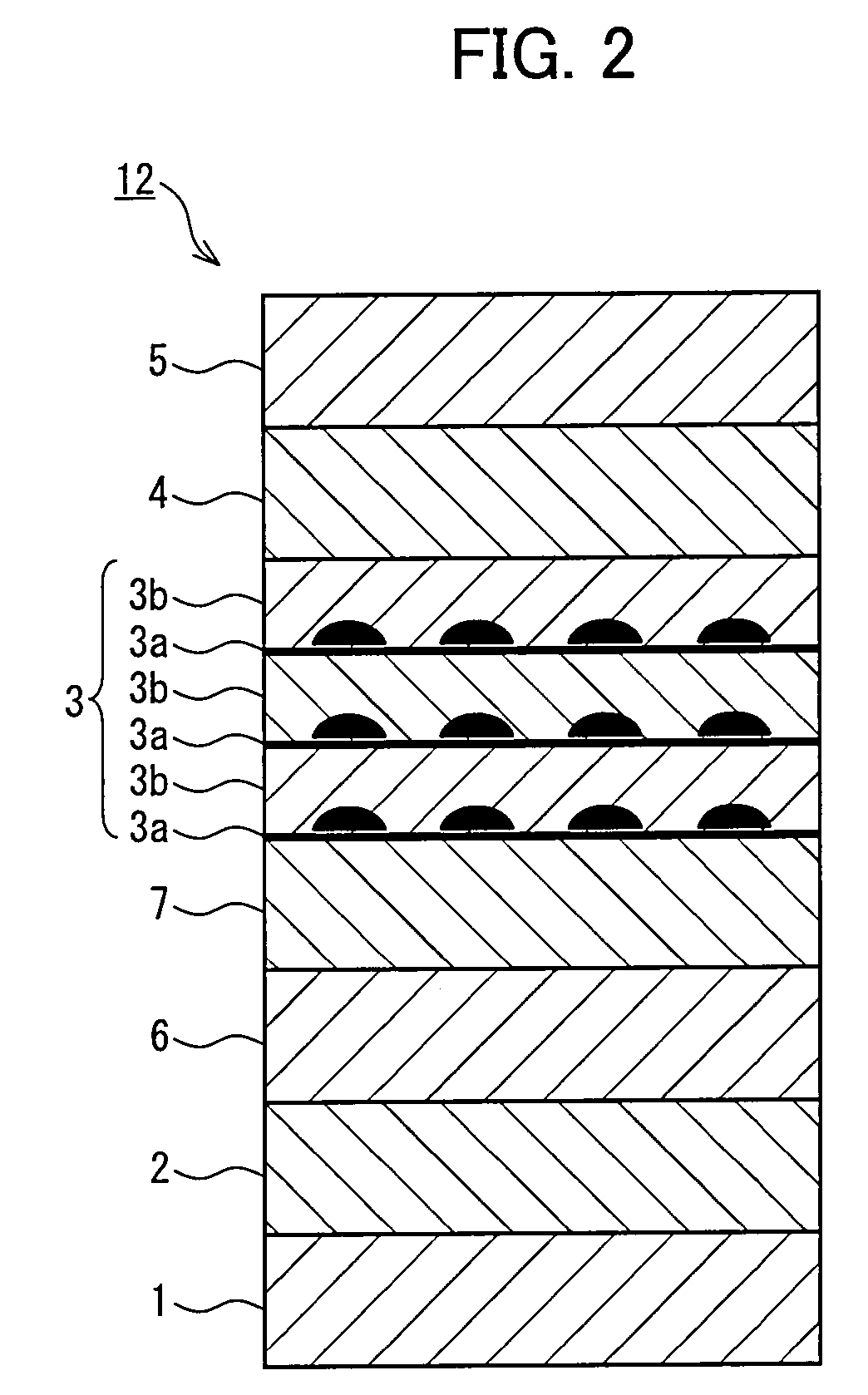AlInGaN LIGHT-EMITTING DEVICE
a technology of light-emitting devices and laser diodes, which is applied in the direction of lasers, semiconductor lasers, solid-state devices, etc., can solve the problems of significant lower threshold currents of laser diodes, and achieve the effect of improving the temperature stability of output and improving the wavelength of light-emitting diodes
- Summary
- Abstract
- Description
- Claims
- Application Information
AI Technical Summary
Benefits of technology
Problems solved by technology
Method used
Image
Examples
Embodiment Construction
[0028]In the following, preferred embodiments of the invention are described in more detail.
[0029]A light-emitting device of the present invention may be manufactured using any suitable growth technique such as molecular beam epitaxy (MBE) or metal-organic vapour phase epitaxy (MOVPE). The invention is not limited to any specific growth technique. Any source of active nitrogen may be used in fabricating the present invention; this includes, but is not limited to NH3 and a nitrogen plasma.
[0030]FIG. 2 is a schematic sectional view of a light-emitting device according to an embodiment of the invention. In this embodiment the light-emitting device is a light-emitting diode 12. The light-emitting device is fabricated in the (Al,Ga,In)N materials system.
[0031]The light emitting diode 12 of FIG. 2 comprises a substrate 1. The substrate may consist of any material with a suitable lattice parameter for growth of (Al,Ga,In)N. The substrate may comprise, but is not limited to, GaN, sapphire o...
PUM
 Login to View More
Login to View More Abstract
Description
Claims
Application Information
 Login to View More
Login to View More - R&D
- Intellectual Property
- Life Sciences
- Materials
- Tech Scout
- Unparalleled Data Quality
- Higher Quality Content
- 60% Fewer Hallucinations
Browse by: Latest US Patents, China's latest patents, Technical Efficacy Thesaurus, Application Domain, Technology Topic, Popular Technical Reports.
© 2025 PatSnap. All rights reserved.Legal|Privacy policy|Modern Slavery Act Transparency Statement|Sitemap|About US| Contact US: help@patsnap.com



